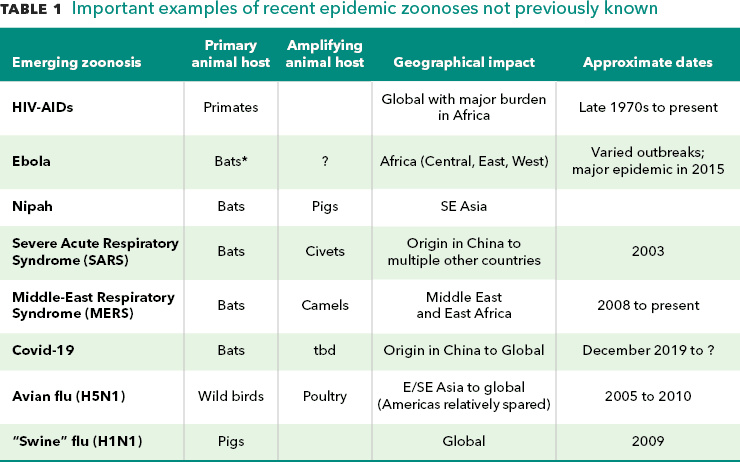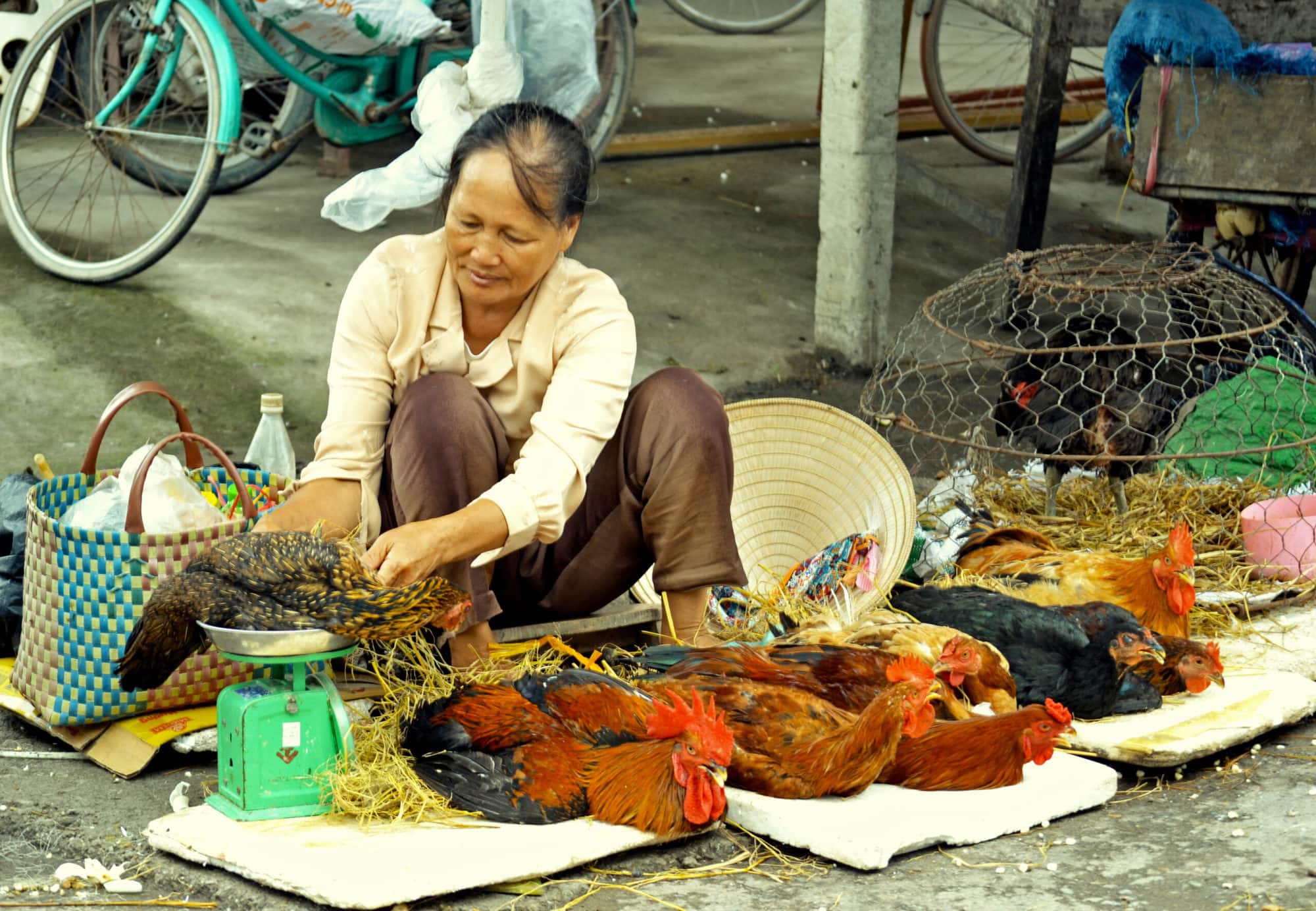Africa’s growing risk of diseases that spread from animals to people
- From
-
Published on
08.04.20
- Impact Area

The outbreak of COVID-19 is a rude awakening to many who believed the era of infectious disease was over.
In this post, Bernard Bett, Delia Randolph and John McDermott argue that not only are pandemics not over, they may be increasing in frequency; and while most originated in Asia in the past, Africa may be poised to become an important source of so-called ‘zoonotic pathogens’—with its population growth, rapid urbanization and rising global integration offering promising vectors for outbreaks.
—Johan Swinnen, series co-editor and IFPRI Director General.
Three quarters of emerging human infectious disease outbreaks are ‘zoonotic’, meaning they originate from viruses and other pathogens infecting animals that then ‘jump’ species to infect people. This ‘species jump’ by pathogens is not new—it has occurred throughout pre- and recorded history. But in the last half of the last century, with the widespread use of antibiotics and vaccines, many had begun to believe that the era of infectious disease was ending. The story of epidemics, however, is always evolving. As we see clearly now with the ongoing COVID-19 pandemic, which is believed to have originated from virus-infected meat or live animals sold in a traditional ‘wet’ food market in Wuhan, China, our hopes for the end of infectious disease were badly misplaced. Over the last 100 years, in fact, there has been growing evidence of not less but more frequent emergence and greater spread of zoonotic pathogens in humans and animals. In recent decades, most of these zoonotic pathogens originated on the western seaboards of Europe and the United States. More recently still, Asia, Africa and South America appear to be growing in importance as origins of zoonotic pathogens.
For centuries, East and Southeast Asia have been the hotspots of influenza and other emerging zoonotic diseases with pandemic potential, but in this century it has also been the origin of novel coronaviruses causing both the 2002–2003 epidemic of severe acute respiratory syndrome (SARS) and the 2019 coronavirus disease dubbed ‘COVID-19’. A major cause of the emergence of new influenzas is the increasing densities of people and their domestic animals. Greater human populations are also increasing human interactions with wild animals, which is speeding the acquisition of disease infections among people.
Africa is now catching up to Asia as an infectious disease hotspot. Africa now has the fastest-growing and youngest human population of any region in the world. In 1900, Africa south of the Sahara had around 100 million inhabitants; the population now stands at 1 billion and by 2100 is projected to grow to around 4 billion people. With increasing human populations and increasing demand for milk, meat and eggs due to rising urbanization and incomes, the densities of humans and domestic animals are also increasing—particularly in coastal West Africa and North Africa and the highlands of East Africa. Figure 1 compares the current human, poultry, pig and ruminant populations across Africa and Asia. Regions of Africa are now approaching the high density levels seen in Asia. . . .
Related news
-

A decade of academic and research partnership advances One Health in Vietnam
International Livestock Research Institute (ILRI)13.11.25-
Health
In northern Vietnam, Thai Nguyen province has become one of the most active hubs for…
Read more -
-

Regenerative Agriculture for Healthy Diets and Resilient Food Systems: Better Diets and Nutrition@Stockholm Forum 2025
Esha Sarswat26.09.25-
Environmental health
-
Food security
-
Health
-
Nutrition
-
Nutrition, health & food security
At Stockholm Food Forum 2025, a side event will spotlight how regenerative agriculture, and agroec…
Read more -
-

ILRI and Kenya Dairy Board sign agreement to transform the dairy sector ‘from farm to glass’
International Livestock Research Institute (ILRI)23.09.25-
Health
-
Nutrition, health & food security
The International Livestock Research Institute (ILRI) and the Kenya Dairy Board (KDB) signed a five-…
Read more -
